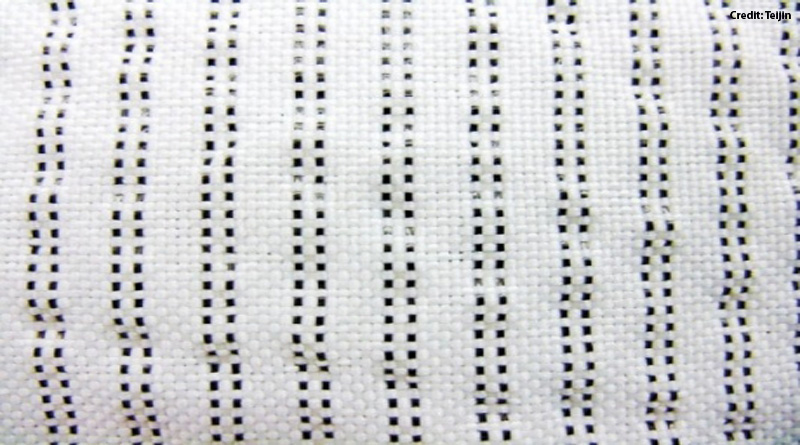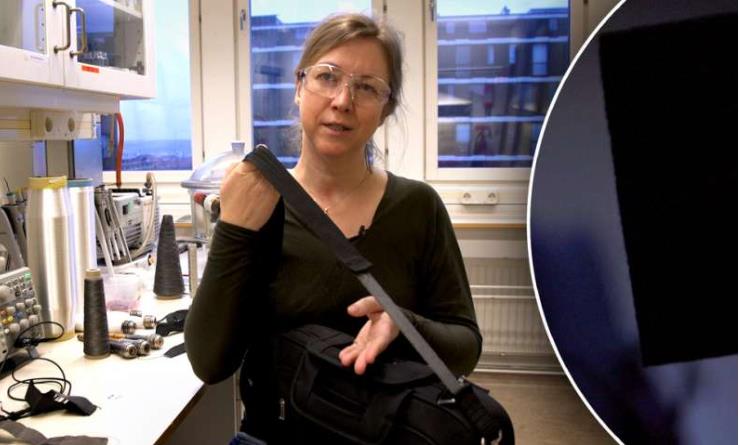Latest from the labs: Piezoelectric Fabric and a robot for Oceans

Piezoelectric Waterproof Fabric

(Source: https://phys.org)
In the latest study in the field of smart materials, researchers at the Chalmers University of Technology have developed a fabric that converts kinetic energy into electric power. The fabric generates more electricity with an increase in load and moisture i.e. the wetter the object gets the higher the electricity produced.
Anja Lund and Christian Müller headed the project. They based the technology on the piezoelectric effect of the textile, which in essence is the ability to generate electricity when it’s stretched. The researchers created the textile by weaving a piezoelectric yarn together with an electrically conducting yarn, which is required to transport the generated electric current. Currently, the textile can produce enough electricity to power a LED light bulb, send wireless signals or drive small electric units such as pocket calculators or a digital watch.
The piezoelectric yarn is made up of 24 fibres, each fibre is as thin as a strand of hair. When the fibres absorb a sufficient amount of moisture, they become enclosed in the liquid and the yarn as a whole becomes more efficient, this phenomenon improves the electrical contact between each fibre.
“The textile is flexible and soft and becomes even more efficient when moist or wet. To demonstrate the results from our research we use a piece of the textile in the shoulder strap of a bag. The heavier the weight packed in the bag, and the more of the bag that consists of our fabric, the more electric power we obtain. When our bag is loaded with three kilos of books, we produce a continuous output of four microwatts. That’s enough to intermittently light an LED. By making an entire bag from our textile, we could get enough energy to transmit wireless signals.” Says Lund.
Previous work by the researchers in the field of piezoelectric textiles has so far mainly focused on sensors and their ability to generate electric signals through pressure sensitivity. Using the energy to continuously drive electronic components is what makes this study unique.
The researchers claim the technology to be ready for mass scale production. Furthermore, the cost of production of the textile is relatively low considering the sophisticated technology underlying it. Through their collaboration with the Swedish School of Textiles in Borås the researchers have been able to demonstrate that the yarn can be woven in industrial looms and is sufficiently wear-resistant to cope with the harsh conditions of mass production.
MIT’s Unmanned Flying Robot That Monitors The Oceans

(Source: https://www.engadget.com)
MIT engineers have developed a wind-powered unmanned nautical air-water vehicle to fly around the world in order to monitor the oceans.
Gabriel Bousquet a former post-doctoral student at MIT led the design of the robot as a part of his postdoc studies where he expanded upon the advantages of merging the beneficial characteristics of the albatross and a sailboat. During his studies, Gabriel noticed that the albatross’s wings provided a natural lift and it used a tactical approach to fly between the layers of air. Similarly, he felt he could tap into the method used in sailboats to harness the wind with a sail while overcoming the detrimental drag from the water with a new design.
The robotic glider fly’s long distances as a result of its long wingspan of 3.7 metres in width, this allows the glider to tap into the wind and helps it stay aloft. The robot as a whole looks like a glider, with a slender body and large wings; towards the rear, a tall tail catches the wind like a sail and points to the sky with a small keel that pokes straight down into the water when the robot is in sail mode.
The robot is 10 times faster than a sailboat and can travel the same distances as an albatross with 1/3ed of the wind.
The team believes its creation to be the most efficient way to monitor the vast stretches of oceans that remain unexplored and hope to deploy an army of unmanned vehicles to record the impact climate change has on the oceans.
“The oceans remain vastly under monitored. In particular, it’s very important to understand the Southern Ocean and how it is interacting with climate change. But it’s very hard to get there. We can now use the energy from the environment in an efficient way to do this long-distance travel, with a system that remains small-scale” says Bousquet.
Links: Chalmers University of Technology; MIT; Piezoelectric Fibres; Unmanned Vehicles
![]()




